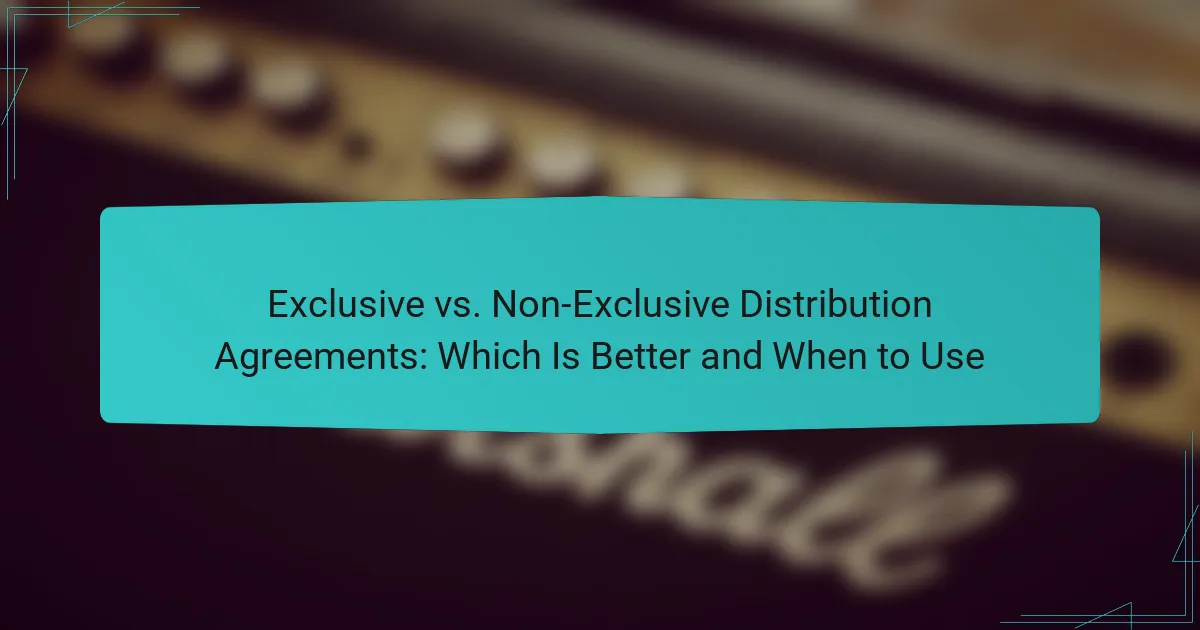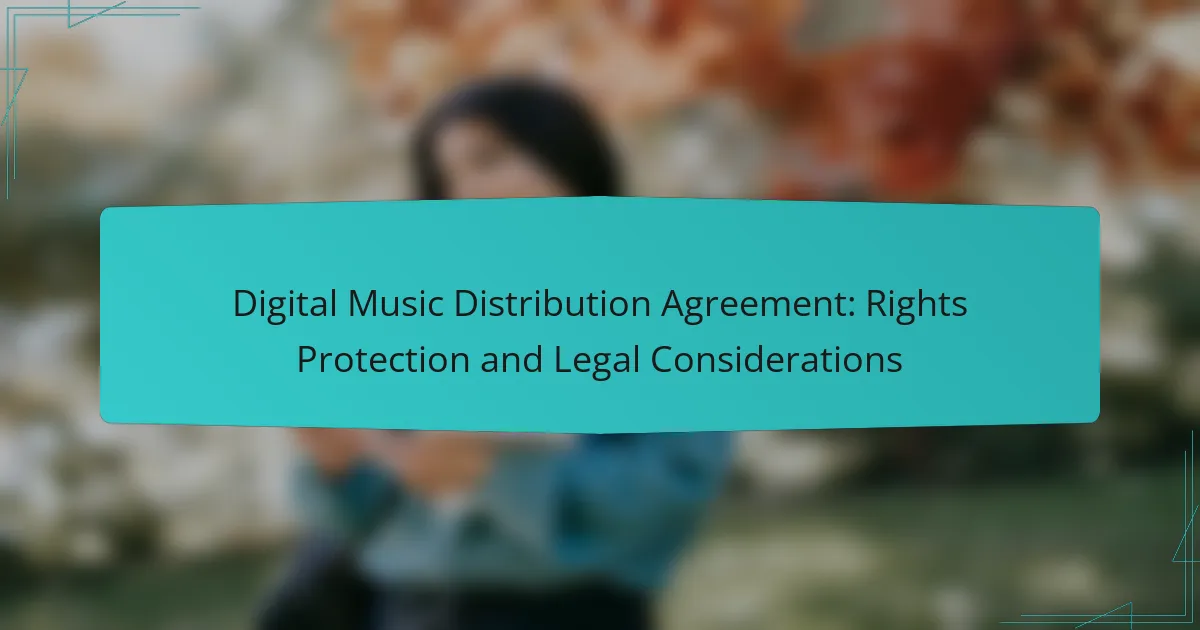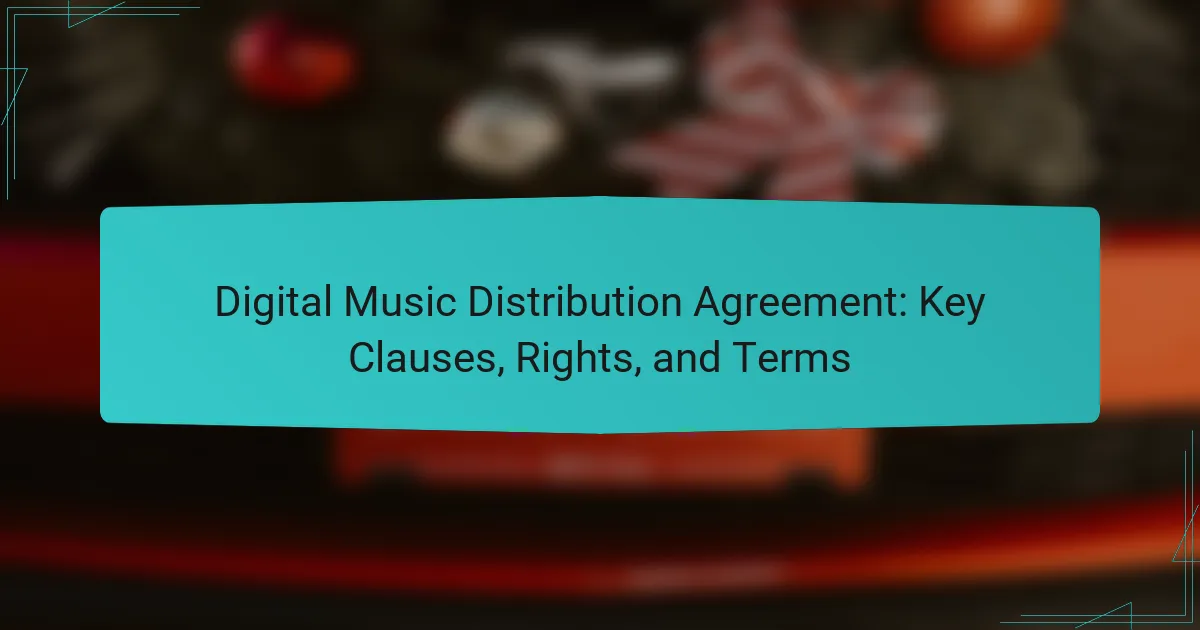When deciding between exclusive and non-exclusive distribution agreements, businesses must consider their goals and market dynamics. Exclusive agreements provide a single distributor with the rights to sell products in a designated area, fostering brand loyalty and reducing competition. Conversely, non-exclusive agreements allow multiple distributors to sell the same products, which can increase market reach and flexibility. Understanding the advantages and appropriate contexts for each type of agreement is crucial for effective distribution strategy.

What are exclusive distribution agreements?
Exclusive distribution agreements grant a single distributor the rights to sell a manufacturer’s products within a specific territory. This arrangement limits competition and can enhance the distributor’s commitment to promoting the brand.
Definition of exclusive distribution agreements
Exclusive distribution agreements are contracts that allow a distributor to be the sole seller of a manufacturer’s products in a designated area. These agreements often stipulate that the manufacturer will not supply other distributors within that territory, creating a unique market position for the chosen distributor.
Such agreements can benefit manufacturers by ensuring that their products are represented consistently and effectively in the market. They can also provide distributors with a competitive edge, as they are the only source for those products in their region.
Key features of exclusive distribution agreements
Key features of exclusive distribution agreements include territorial rights, performance obligations, and duration. The distributor typically receives exclusive rights to sell the products in a defined geographical area, which can range from a city to an entire country.
Performance obligations may require the distributor to meet certain sales targets or marketing commitments to maintain exclusivity. The duration of these agreements can vary, often lasting several years, with options for renewal based on performance or mutual agreement.
Examples of exclusive distribution agreements
An example of an exclusive distribution agreement can be seen in the automotive industry, where a car manufacturer may grant a single dealership the rights to sell its vehicles in a specific region. This dealership would then be the only authorized seller, allowing it to build a strong local market presence.
Another example is in the technology sector, where a software company might partner with a single distributor to sell its products exclusively in a country. This arrangement helps the software company maintain control over its brand and ensures that the distributor is fully invested in promoting the product.

What are non-exclusive distribution agreements?
Non-exclusive distribution agreements allow multiple distributors to sell a supplier’s products in a specific market. This arrangement provides flexibility for both the supplier and the distributors, enabling broader market reach without limiting sales to a single entity.
Definition of non-exclusive distribution agreements
Non-exclusive distribution agreements are contracts that permit a supplier to sell their products through multiple distributors. Unlike exclusive agreements, these contracts do not restrict the supplier from working with other distributors or the distributors from selling competing products. This setup often leads to increased competition among distributors, potentially benefiting consumers through lower prices.
Key features of non-exclusive distribution agreements
Key features of non-exclusive distribution agreements include flexibility in distribution, the ability to work with multiple partners, and generally lower barriers to entry for distributors. Suppliers can expand their market presence quickly by engaging several distributors, while distributors can diversify their product offerings. However, this can also lead to conflicts over pricing and brand representation.
Examples of non-exclusive distribution agreements
Common examples of non-exclusive distribution agreements can be found in various industries. For instance, a beverage company may allow several local retailers to sell its drinks, enabling each retailer to compete on price and service. Similarly, a software developer might grant multiple resellers the rights to distribute its software, allowing them to target different customer segments. These arrangements can be beneficial for both suppliers and distributors, fostering a competitive environment.

When should you use exclusive distribution agreements?
Exclusive distribution agreements are best utilized when a manufacturer wants to limit the number of distributors for their products in a specific market. This approach can enhance brand loyalty and streamline distribution, making it a strategic choice for businesses aiming to establish a strong market presence.
Benefits of exclusive distribution agreements
One major benefit of exclusive distribution agreements is the potential for increased brand loyalty. By limiting distribution to a select few partners, manufacturers can ensure that their brand is represented consistently and effectively. This exclusivity can also motivate distributors to invest more in marketing and sales efforts, knowing they have a unique product offering.
Another advantage is improved control over pricing and market positioning. With fewer distributors, manufacturers can better manage pricing strategies and maintain a premium image. This can lead to higher profit margins and a more cohesive brand message across different regions.
Ideal scenarios for exclusive distribution agreements
Exclusive distribution agreements are particularly effective in niche markets where specialized knowledge or expertise is essential. For example, luxury brands often use exclusivity to maintain their high-end image and ensure that their products are sold in environments that reflect their values.
Additionally, businesses launching new products may find exclusive agreements beneficial to create a strong initial impact. By partnering with a single distributor, they can focus their marketing efforts and resources, leading to a more successful product introduction. However, it’s crucial to assess the distributor’s capabilities and market reach before committing to exclusivity.

When should you use non-exclusive distribution agreements?
Non-exclusive distribution agreements are suitable when a business wants to maximize market reach and flexibility. These agreements allow multiple distributors to sell the same product, which can enhance competition and increase sales opportunities.
Benefits of non-exclusive distribution agreements
One major benefit of non-exclusive distribution agreements is the ability to reach a broader audience without being tied to a single distributor. This flexibility can lead to increased sales as different distributors can target various market segments effectively.
Additionally, non-exclusive agreements often involve lower risks for manufacturers. If one distributor underperforms, others can compensate, reducing reliance on a single channel. This can be particularly advantageous in dynamic markets where consumer preferences shift rapidly.
Ideal scenarios for non-exclusive distribution agreements
Non-exclusive distribution agreements work well in industries where product demand is high and competition is fierce. For example, consumer electronics or fashion items often benefit from multiple distributors vying for attention in the same market.
These agreements are also ideal for new products entering the market. By allowing various distributors to promote the product, businesses can quickly gauge market response and adjust strategies accordingly. However, it is crucial to ensure that all distributors maintain consistent branding and quality standards to avoid market confusion.

How to choose between exclusive and non-exclusive agreements?
Choosing between exclusive and non-exclusive distribution agreements depends on your business goals and market strategy. Exclusive agreements grant a single distributor rights to sell your products, while non-exclusive agreements allow multiple distributors to compete for sales.
Factors to consider in decision-making
When deciding between exclusive and non-exclusive agreements, consider factors such as market reach, control over pricing, and brand representation. Exclusive agreements can enhance brand loyalty and provide a focused marketing effort, while non-exclusive agreements can increase market penetration and reduce dependency on a single distributor.
Evaluate your product type and target market. For instance, luxury brands may benefit from exclusivity to maintain a premium image, whereas mass-market products might thrive with broader distribution through non-exclusive channels.
Comparison of exclusive vs non-exclusive agreements
Exclusive agreements often lead to stronger partnerships, as distributors are more invested in promoting your product. However, they can limit your market reach and create dependency on one distributor. In contrast, non-exclusive agreements allow for a wider distribution network, but may result in less commitment from distributors and potential price competition.
Here’s a quick comparison:
- Exclusive Agreements: Higher brand loyalty, focused marketing, limited market reach.
- Non-Exclusive Agreements: Broader market access, competitive pricing, potential dilution of brand image.
Ultimately, the choice depends on your specific business needs, market conditions, and long-term objectives. Regularly reassess your distribution strategy to adapt to changing market dynamics.

What are the legal implications of distribution agreements?
Distribution agreements have significant legal implications that can affect the rights and obligations of the parties involved. These agreements dictate how products are marketed, sold, and distributed, and can vary widely based on whether they are exclusive or non-exclusive.
Legal considerations for exclusive agreements
Exclusive distribution agreements grant a distributor the sole right to sell a supplier’s products in a specific territory. This exclusivity can lead to stronger brand loyalty and more focused marketing efforts, but it also imposes legal obligations on both parties, such as minimum purchase requirements and adherence to pricing policies.
It is crucial to ensure that the terms of exclusivity comply with local competition laws, as some jurisdictions may view such agreements as anti-competitive if they unduly restrict market access for other distributors. For example, in the European Union, exclusive agreements must not infringe upon the principles of free competition.
Legal considerations for non-exclusive agreements
Non-exclusive distribution agreements allow multiple distributors to sell the same products within a territory, providing flexibility and broader market reach. However, these agreements can lead to conflicts among distributors and may dilute brand identity if not managed properly.
When drafting non-exclusive agreements, it is essential to clearly outline the terms of competition among distributors, including pricing strategies and promotional activities. This clarity helps prevent disputes and ensures that all parties understand their rights and responsibilities. Additionally, it’s advisable to include termination clauses that specify conditions under which the agreement can be ended, protecting both the supplier and the distributor.



